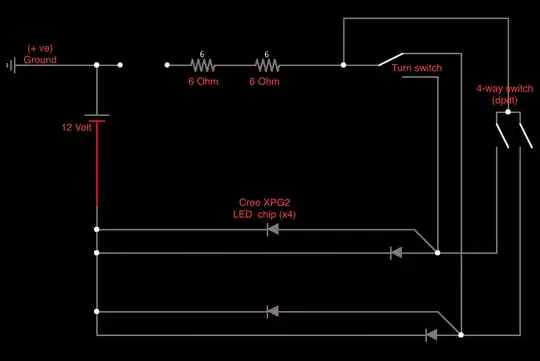I have a 1976 Triumph Bonneville and recently replaced the garbage LED chips inside the eBay signal lights with brighter Cree LED chips. I bench tested the circuit shown below with a 12v bench supply and everything worked perfectly. I also tested it with the motorcycle battery with the same success. However, once I began installing the system and testing it on the motorbike as I went along, I've been burning out LED's (they only glow dimly when fried). I want to know what I am doing to be frying these things left right and center!
I will mention that the bike is positive ground. This means the LED lighting circuit cannot ground to the frame and must have it's own closed circuit directly to the battery. Occasionally when wiring I'll have the battery connected and one of these negative return wired will spark off the bike (potential culprit?). What do you guys think is killing the lights?
I've already come up with some potential solutions:
Adding protection diodes in the reverse direction parallel to the led's (prevent reverse current)
Make absolutely sure the wire attaching to the chips are insulated from the metal lamp housing.
Add a tiny fuse to each leg of the circuit.
Thank so much everyone!
Paul
